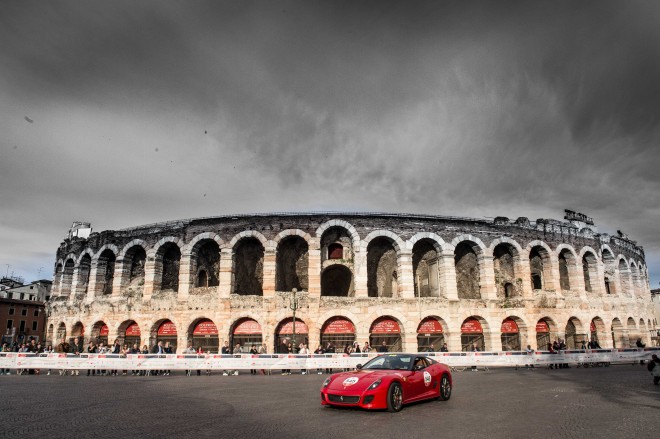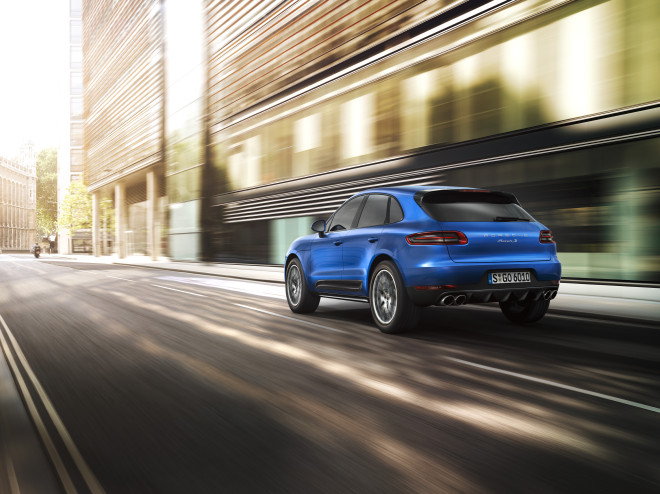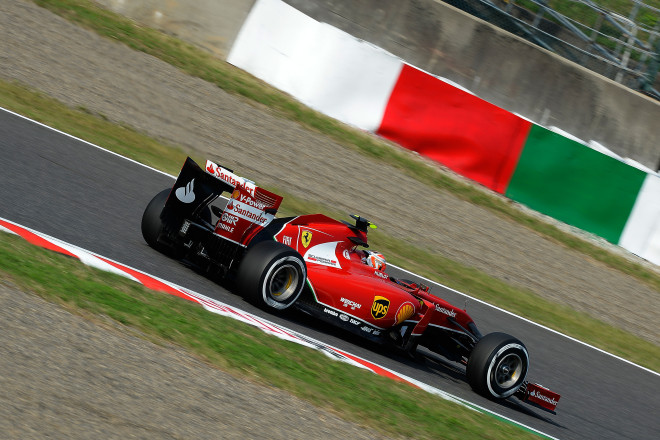
Ferrari is being sold by parent company Fiat. We’re kind of worried about what happens next.  Ferrari
Ferrari
Fiat Chrysler shareholders certainly approved of the deal, with FCAU shares rising more than 12 percent yesterday following the announcement, but brand aficionados (including us) are concerned about what could happen to a publicly traded Ferrari.
We don’t have any information yet on who might plunk down the cash for a piece of one of the most famous companies on the planet, but to be honest, we’re kind of worried. Ferrari’s been doing great things under the Fiat umbrella, and new ownership could take things in a very different direction. There are a number of potential outcomes that we can think of, including some that are … a little farfetched. Regardless, here are the six worst things that could happen to an independent Ferrari.
Introducing the New Ferrari SUV
In recent years, Ferrari has been very successful, with models like the 458 Italia and the all-wheel-drive FF particularly well received. Part of its strategy has been to value exclusivity and scarcity over volume, so it’s been selling just 7,000 cars a year or so—keeping supply well short of meeting demand. That strategy led to tension with Fiat head honcho Sergio Marchionne, and it might not fly at all when the new bosses come in.
Ferrari’s focus on amazing sports cars has served it well to this point. But once it needs to stand on its own, answering directly to shareholders, it may not be able to keep its laser-like focus. It could follow the example of Porsche, which has had tremendous success recently by cranking up volume and moving away from its heritage, with sporty cars that are also practical for getting around. Last year, it sold nearly twice as many Cayenne SUVs as sports cars. Lamborghini and Bentley are bending to market demands too, offering SUVs (without big volume expansions).
But no SUV, no matter how sexy—and Lambo’s Urus is admittedly gorgeous—would look right with the prancing horse on the side.

We really don’t want to see Ferrari try its own version of the Porsche Macan SUV.  Porsche
Porsche
The Newest Division of Toyota
Then there’s the possibility that Ferrari gets snatched up by another automaker, like Porsche’s move on Volkswagen a few years back. We can think of a few companies without luxury brands that might be interested in Ferrari, though a hostile takeover is a long-shot. The Ferrari family will still own some 10 percent of the company. Another 80 percent will stay with current Fiat-Chrysler shareholders, including large chunks owned by Fiat’s founding family, the Agnellis, as well as Fiat-Chrysler CEO Sergio Marchionne.
Goodbye Formula One
Then there’s Ferrari’s legendary Formula One team, which, despite historic glory, hasn’t won a Constructors’ Championship since 2008 and hasn’t fielded a Drivers’ Champion since 2007. Reports suggest Ferrari generates nearly $400 million in yearly revenue from its Formula One team between race winnings, sponsors, and merchandising, and it’s the only team that has competed in every year of F1, going back to the 1950s. The thought of Ferrari leaving Formula One is unthinkable—unless it decides it’s not worth staying in.
Ferrari only started selling cars to finance its racing teams, but priorities have since flipped. For a profit-minded company, why bother racing if it loses money? Ferrari’s brand is as strong as it’s ever been and we can see getting rid of the F1 team and all the drama and distraction that goes with it as something a profit-minded activist investor like Carl Icahn might insist on.

We don’t want to see Ferrari abandon F1.  Ferrari
Ferrari
Hello NASCAR!
After he was pushed out of the company last month, Ferrari Chairman Luca de Montezemalo said Ferrari was now an “American” company (it didn’t sound like a compliment). What do American car companies do? Why, compete in NASCAR, of course. Dodge dropped out of the sport following the 2012 season, so that leaves a spot open for the Prancing Horse. It would definitely appeal to the American heartland and could cement Ferrari’s place as an American motorsports icon.
AMERICA! Okay, probably not.
Lame Hybrids
Right now, Ferrari cars are lumped in with Fiats when it comes to meeting America’s exacting CAFE fuel economy standards, which demand that a company’s cars yield 34.1 mpg by 2016, and 54.5 mpg by 2025. Standing on its own, without smaller vehicles to offset the terrible fuel economy of cars like the 458 Italia (15 mpg) and the California (16 mpg), Ferrari might have to sell some hybrids. And not brain-meltingly fast hybrids like the LaFerrari supercar. Boring hybrids. Like the Prius. Shudder.
RIP Ferrari
Of course, the absolute worst case scenario is that Ferrari goes under. It’s hard out there for a carmaker, and without deep pockets bankrolling expensive research and development, it’s possible a global recession and some mismanagement could send the company into bankruptcy.
While it’s surely likely that in such a scenario someone would come along to snap up the company, especially at a fire sale price, it would nevertheless be a tragic end to such a storied firm. Let’s hope it doesn’t come to that.
Don’t Give Up Hope
We don’t actually think any of these are going to happen (though Ferrari joining NASCAR would be epic, if questionable). Ferrari’s leadership will most likely be mindful of the company’s heritage, especially with Pierro Ferrari, Enzo’s only living son, still involved as vice chairman.
“It is an iconic and venerable brand that can and should exist on its own,” says Ferrari enthusiast, Shark Tank star, and LaFerrari owner Robert Herjavec. “Ferrari inherently understand the philosophy of creating desire and by nature that is limited,” regardless of a need to make a profit.
We look forward to seeing what’s next from Maranello, though we’ll have our fingers crossed.
What are your worst-case scenarios for an independent Ferrari? Could this actually mark the dawn of a new, glorious era for the company? Let us know in the comments section.
David Paul Morris/Bloomberg via Getty Images
